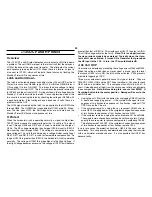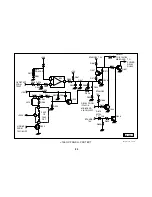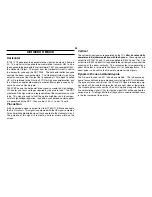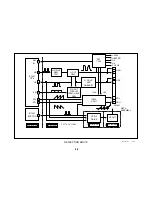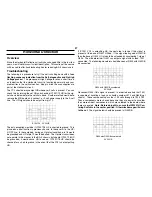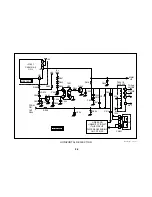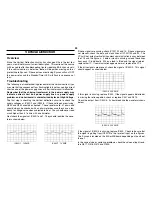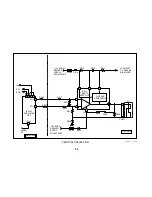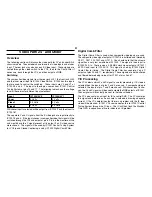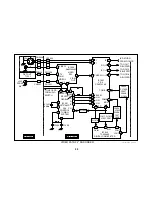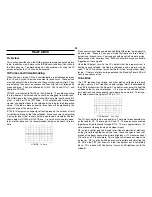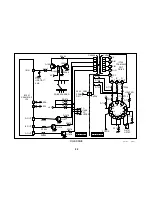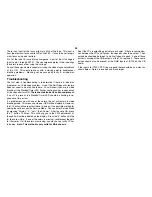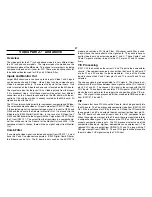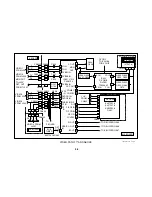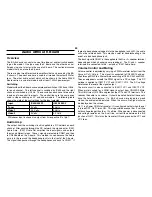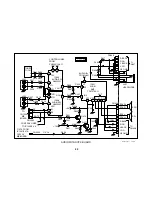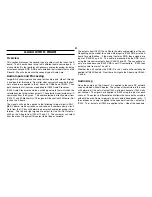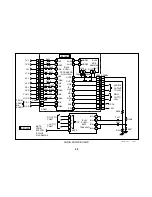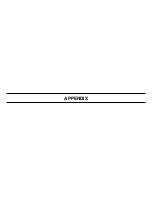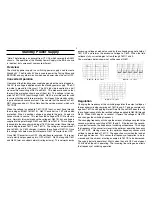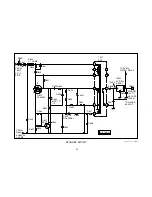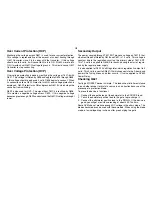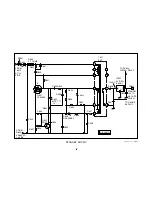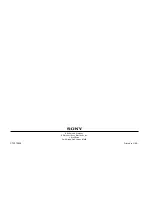
37
Video Path 27” and above
Overview
The video path for the 27” inch and above models is very different from
the 24” inch and under models. The larger screen size models use the
MA board in place of the MB board. This allows for more inputs, including
component video and a 2
nd
tuner for PIP. There are also connections for
the additional boards used for PIP and 3D Comb Filter.
Inputs and Monitor Out
Larger BA-5 chassis sets can have up to six inputs. Video 1 and 2 inputs
can be composite and S Video. Video 3 input can be composite only.
Video 4 is component only. There are also inputs for two tuners. One
main is located on the A board and one sub is located on the MA board.
The signals are input by the jacks if it is a Video input and from the tuners
if it is broadcast video. All of these signals will be output from different
connectors on the A board to connectors on the MA board, with the ex-
ception of the sub tuner which is already located on the MA board. All
signals are input to the YCJ.
The YCJ contains switching circuits for component, composite and S Video.
The selected composite video or Y signals are output IC301/17 Mon Out.
If the selected signal is a composite video signal, it is sent to Q304 and
Q306 and then back to the A board for Monitor Out. It is also sent to the
B Board or to IC302 Digital Comb Filter. In the case of an S Video, the Y
Q304 and Q306 combine their signal with the C signal from IC301/19 with
the Y from IC301/17. The output from the transistors is a composite sig-
nal that will be sent to the A board for the Monitor Out jack J204. If the
component input is chosen, there will be no signal output from Monitor
Out.
Comb Filter
If a composite video signal is selected and output from IC301/17, it must
have the Y and C components separated. IC302 Digital Comb Filter or
the B board can do this. The B board is only used on the KV27FV16
model and contains a 3D Comb Filter. Whichever comb filter is used,
they will have the same effect on the signal path. They each take com-
posite video input and output separated Y and C. These Comb Y and
Comb C signals are then re-input to the YCJ at pins 22 and 20 respec-
tively.
Y/C Processing
IC301 YCJ then switches the correct Y and C input to the demodulator
circuits. If the composite source is chosen then the Comb Y and Comb C
at pins 22 and 20 are input to the demodulator. If one of the S video
inputs is chosen then Y and C from pins 12 and 11, or pins 15 and 14 are
selected.
The chosen signals are demodulated to YUV signals. Then there is an-
other switch that switches between these signals and the YUV inputs at
pins 50, 51 and 52. The chosen YUV signal is then mixed with the PIP
YUV inputs. These inputs also contain a Y SW signal at IC301/45 which
blanks the main picture for the proper size and position of the PIP win-
dow. This signal is then processed further, matrixed to RGB and output
from IC301/37, 38 and 39.
PIP
The models that have PIP will use the P board, which plugs directly into
the MA board. The P board accepts composite video from IC301/24 PIP
Out. If the input chosen for PIP by the user is S Video, the YCJ combines
the separate Y and C and outputs them as composite video from pin 24.
The PIP board will also accept inputs from the YUV component input.
When these signals are input to the P board, they are modulated to form
a composite video signal. This is because the PIP IC on the P board only
accepts composite video inputs. The PIP processor selects one of the
composite video inputs, digitizes, demodulates and compresses it. The
reduced YUV signal is output from CN305/12, 12 and 14, along with the Y
SW signal output from CN305/15. These YUV signals will be placed into
the main video YUV signals using the Y SW input.
Summary of Contents for FD TRINITRON WEGA KV-13FM12
Page 27: ...22 NOTES ...
Page 48: ...APPENDIX ...

